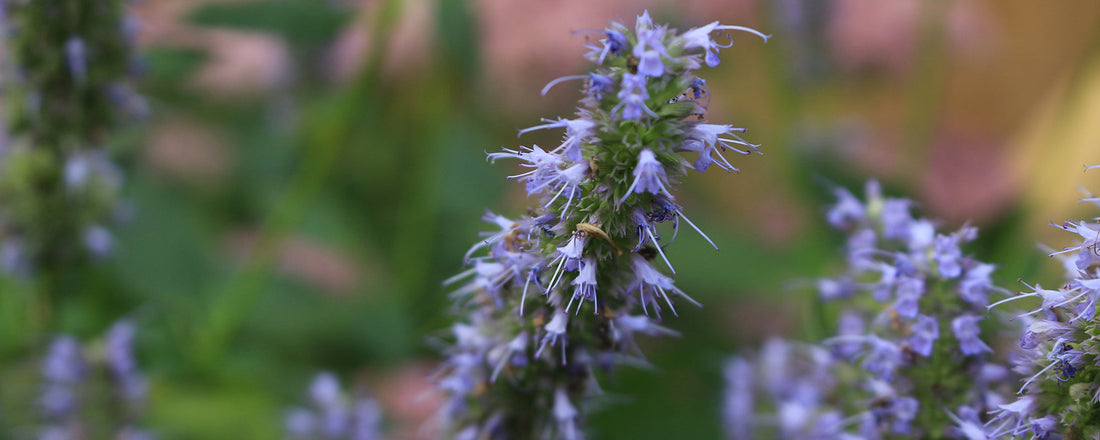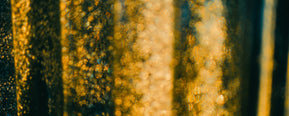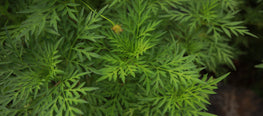Patchouli in Perfume: Scent Profile, Origins & Perfect Pairings
What does Patchouli smell like? This question instills curiosity in many to venture into the world of perfumery, where patchouli is a base note with deep, earthy undertones.
In this article, discover the scent profile of patchouli, how perfumers harness its qualities, and why Buchart Colbert selected it as one of the signature notes in our carefully crafted fragrances.
As an Indie Perfume House, we blend musical memoirs with artistic inspirations to create multi-layered perfumes that evoke lasting impressions.
What Does Patchouli Smell Like?
Patchouli unfolds a scent that is subtle yet full of character. Unlike a fleeting top note, patchouli lingers, revealing different layers as time passes, almost like chapters in a novel or movements in a symphony.
- Core scent: Woody, sweet, earthy, with a spicy undertone and the richness of balsam
- First impression: Resinous, herby, pungent, and sometimes with a lingering camphor note.
- Placement in composition: Typically in the base, where it provides structure and long-lasting resonance to perfumes
- Evolution over time: Begins sharply, gradually easing into sensual warmth, enduring as an anchoring focal point
- Mood and emotion: Patchouli evokes mystery, sensuality, reflection, and a sense of being enveloped in something ancient and profound
For many perfumers, patchouli functions as the spine of a fragrance story, holding together the fizzy citruses, airy florals, and honeyed resins into a smooth olfactive symphony.
The Origin of Patchouli in Perfumery
Patchouli is obtained from the leaf of Pogostemon cablin, part of the mint family. Patchouli is native to Southeast Asia and grows well in tropical, even wet, climatic conditions. The farmers grow the leaves, dry them, and distill them to obtain their essential oil.
Traditionally, the earthy smell of patchouli was utilized in perfume shawls, clothes, and silks exported from India to Europe to avoid moth damage on long sea voyages.
This connection with lavish fabrics associated luxury with patchouli. It entered European perfumery by the 19th century and was highly valued there for its oriental and robust qualities.
Today, perfumers use patchouli both in natural oil and refined synthetic fractions, giving them flexibility to highlight different facets, from smoky darkness to honeyed sweetness.
Botanical & Cultural Context
Historically, patchouli has symbolized wealth, sensuality, and mystery.
In Victorian England, it was a marker of luxury when imported fabrics carried their aroma.
In Eastern traditions, patchouli has been used in rituals for protection and meditation, aligning with its grounding properties.
In literature and art, patchouli often represents exoticism and nostalgia, capturing a sense of otherworldly allure. Its association with the 1960s counterculture cemented its role as a symbol of freedom and bohemian identity.
Extracting the Patchouli Note
Patchouli’s scent is typically extracted through steam distillation of its dried leaves, producing a thick, dark oil with a long-lasting fragrance. It distills its earthy richness but softens its sharper herbal edges.
Perfumers sometimes use molecular distillation to isolate specific facets, such as patchoulol, which emphasizes its woody dimension. Where natural oil gets too heavy, synthetic substitutes enable cleaner or more refined use, broadening patchouli’s versatility across olfactive families.
How to Experience Patchouli in Perfume
On skin, patchouli evolves gradually. Its initial herbaceous sharpness mellows into a warm, resinous scent that lasts hours, and its earthy foundation lingers longest.
Patchouli reveals its character in cooler weather, when its depth is unfolded beautifully, but it also lends structure to summer fragrances when paired with light notes.
Test it by blotters, and it may seem darker and denser, but on skin, it is sensual and warm.
What Are the Best Scent Pairings with Patchouli?
Patchouli's robust profile is best suited to its use in high-quality, well-balanced perfumes that accentuate its earthy nature. When combined thoughtfully, it provides balanced, multi-layered perfumes that appeal to fragrance connoisseurs.
Common categories are florals, which soften its intensity; woods, which amplify its depth; citruses, which add brightness; and resins, which contribute warmth.
- Florals like Rose or Jasmine: Earthy patchouli is balanced by soft flowers, resulting in a romantic, earthy mix where the floral freshness lifts the heavier base.
- Woods such as Sandalwood or Vetiver: Woody scents underpin the woody structure of patchouli, creating a warm, woody depth that conveys timeless elegance.
- Citruses, including Bergamot or Orange: Citrus notes provide a clean contrast, cutting the musk with a clean lift to create a bright but enduring blend.
- Resins like Amber or Myrrh: These add warmth, balsamic depth, sweetening out patchouli and imparting deep, mysterious richness.
- Musks and Spices: Musky fusions make it even more sensual, and spices like cinnamon add underlying warmth, making the overall scent more dynamic.
For fragrance layering, start with a patchouli base and develop complementary notes one after another, allowing each layer to settle before adding the next..
Common Misconceptions: Similar Scents, Very Different Stories
Patchouli naturally sparks curiosity for perfumery, yet misconceptions can cloud its true character. Awareness of these distinctions reveals its own special niche in perfume combinations and inspires deeper appreciation among perfume enthusiasts.
Misconception 1: Patchouli Smells the Same as Vetiver
Patchouli is sometimes mistaken for vetiver as they both have a certain earthiness to them, but in perfume creation, their aromas are quite distinct.
Patchouli offers a richer, muskier depth with sweet and spicy undertones, evoking damp soil and aged wood, while vetiver presents a cleaner, grassier freshness reminiscent of roots and smoke.
In compositions, patchouli anchors with warmth and tenacity, while vetiver adds a raw, earthy scent so that they complement rather than being interchangeable.
Misconception 2: Patchouli Is Only for Hippie Fragrances
A common belief ties patchouli exclusively to the 1960s counterculture, where it masked body odor and was a sign of rebellion, but patchouli dates back through centuries.
Originating in ancient Asian traditions for spiritual and medicinal uses, patchouli graces luxurious modern fragrances with sophistication. The myth overlooks patchouli’s versatility, where it contributes to elegant, multi-layered blends rather than a singular, outdated image.
Misconception 3: Patchouli is Too Overpowering for Daily Wear
Most people think that patchouli's strength makes it unsuitable to wear daily, yet in balanced formulations, it evolves subtly on the skin.
Its initial boldness softens into a warm whisper, adaptable for various occasions when dosed appropriately. In fact, patchouli can transform into an elegant note that lifts the scent instead of overpowering it.
Summary Table in The Scent Profile
| Notes | Typical Placement | Scent Profiles | Impact on Perfume Character |
|---|---|---|---|
| Patchouli | Base | Earthy, woody, sweet balsamic | Grounding, sensual, long-lasting |
| Vetiver | Base | Smoky, dry, grassy | Crisp, elegant, cool-toned |
How Buchart Colbert Elevates Patchouli in Our Perfumes
At Buchart Colbert, patchouli serves as a pivotal base note in our fragrance L’Hantise, providing the smoky-patchouli amber foundation that grounds the composition.
Its earthy depth mirrors the nostalgic echoes inspired by Chopin's Études, blending seamlessly with vetiver and amber to evoke a hazy, ethereal quality.
Conceptually, patchouli captures the haunting flashbacks central to L’Hantise's story, its musky warmth symbolizing lingering memories that fade yet endure.
In our indie perfume line, it defines the multi-layered nature of our unisex creations, ensuring they wear long and leave profound impressions.
By incorporating patchouli, we honor the convergence of past and present, crafting scents that transcend time through detailed craftsmanship.
Key Takeaways
What does patchouli smell like? Its earthy, musky profile with sweet-spicy nuances creates a grounding yet intriguing foundation in perfumery. This note evokes introspection and sensuality, evolving from bold to warm over time.
At Buchart Colbert, we capture its essence uniquely in L’Hantise, blending it into a dreamy whisper that honors musical and literary inspirations.
Indulge in this signature creation with our curated Sample Discovery Set or the full-size 50 mL bottle, crafted for true fragrance connoisseurs.
FAQs
Patchouli’s role in perfumery raises frequent questions. Here are some of the most relevant ones:
1. Does patchouli smell the same in every perfume?
No, it's scent shifts depending on pairings and concentration.
2. What is the difference between light and dark patchouli?
Light versions are milder and fresher, while dark ones offer deeper, richer intensity.


